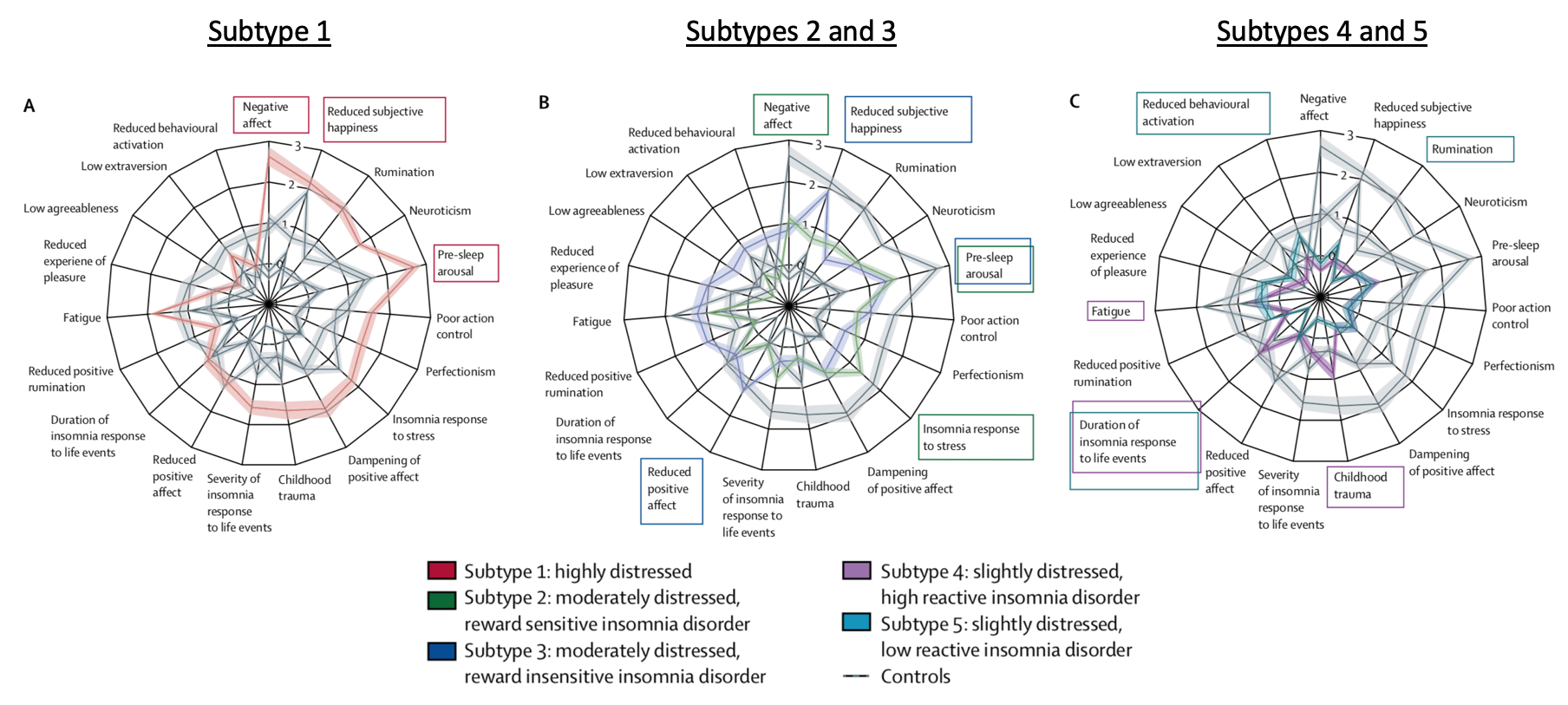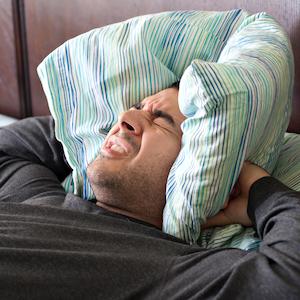Insomnia is a tricky subject. Those who suffer from the condition -- perhaps 10% of the population -- exhibit a wide variety of characteristics. The lack of a consistent pattern among these patients makes the condition difficult to classify, which in turn makes it difficult to understand.
Previous attempts to classify insomnia by subtype fell flat. Those failed efforts aimed at classifying the disorder based on sleep characteristics. So new research, conducted by a team based in the Netherlands, classified insomnia based on non-sleep characteristics.
First, the authors collected data, such as life history and personality, on more than 4,000 participants. Because they wanted to avoid collinearity in their model (i.e., the correlation of highly related variables, such as "sadness" and "depression"), they whittled down their data to include 26 characteristics.
Using these traits from a subset of participants, the authors discerned five different insomnia subtypes:
- Highly distressed
- Moderately distressed but reward sensitive (i.e., with intact responses to pleasurable emotions)
- Moderately distressed and reward insensitive (i.e., without intact responses to pleasurable emotions)
- Slightly distressed with high reactivity (i.e., long-lasting insomnia in response to life events)
- Slightly distressed with low reactivity (i.e., short-duration insomnia in response to life events)
Next, the authors validated the model with a new set of participants, confirming that this group also fit into an insomnia model that had five subtypes. Finally, they showed, using the original group of participants (who formed the basis of their model) that the insomnia subtype "diagnosis" was highly stable. After about 5 years, the participants had an 87% probability of being identified as the same insomnia subtype.
The Five Insomnia Subtypes
The authors provided graphs that depicted the characteristics of the five insomnia subtypes.

As shown, each graph depicts the three key characteristics (in boxes) that distinguish each insomnia subtype from controls. For instance, patients in subtype 1 ("highly distressed") exhibited negative personality traits, reduced happiness, and pre-sleep arousal (which has various kinds of physical and psychological manifestations, such as a rapid heartbeat or anxiety over falling asleep). Patients in subtype 4 tended to be fatigued and to have suffered childhood trauma.
Limitations and Conclusion
While the overall probability that a patient would have the same insomnia subtype approximately five years later was 87%, the probabilities were not equal across subtypes. Specifically, subtypes 4 and 5 were not as consistent over time (with 67% and 44% probabilities, respectively). Also, it's possible that there were subtypes that were not detected using their methodology.
Still, this study represents a major step toward personalized treatment for insomnia patients, undoubtedly good news for those of us in need of a little shut-eye.
Source: Tessa F Blanken, et al. "Insomnia disorder subtypes derived from life history and traits of affect and personality." Lancet Psychiatry. Published online: 7-January-2019. DOI: 10.1016/ S2215-0366(18)30464-4




